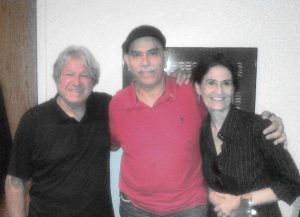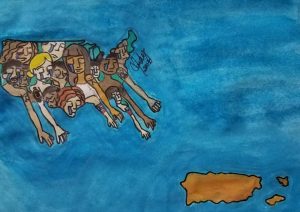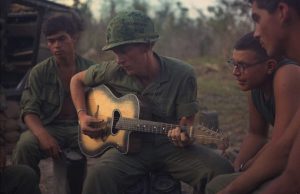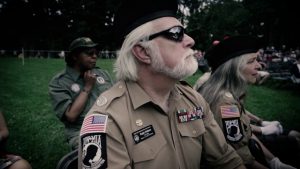Podcast: Play in new window | Download
Puerto Rico Disaster Recovery, The Jones Act And Federal Aid
The devastation to Puerto Rico from Hurricane Maria has been likened to the impact of an atomic bomb, destroying the U.S. territory, and leaving nearly 3.5 million U.S citizens without power, limited access to food and water, and a collapsed infrastructure. Donald Trump was quick to blame the island nation for its problems, even highlighting its financial debt to Wall Street.
Puerto Rico has a history of struggling for federal aid for natural disasters contrasted with those on the mainland. The White House response to much-needed funding post-Maria is to wait for a “full assessment” and “fact-finding” process. Early reinforcements from the Federal Emergency Management Agency (FEMA) are appalling, if nonexistent: Diesel fuel for generators is scarce. Towns outside metro areas are unreachable. Hospitals can’t treat patients. Streets are flooded, looting is rampant, highways destroyed. The National Guard, FEMA, Red Cross or federal vehicle have yet to be spotted on the island. None of this is new.
In 1989, when Hurricane Hugo hit South Carolina, Puerto Rico and the USVI, the elder President Bush was criticized for not responding quickly enough. More relief for the Caribbean was added to a bill initially designed to address earthquake damage in California. And when Hurricane Georges pounded Puerto Rico in 1998, it took half a year for the federal government to act on a long-term plan for the island.
A central reason for this is the Jones Act, a century-old shipping law often accused of stifling the Puerto Rican economy. Among other things, the Act requires that domestic shipping be conducted by U.S.-owned, U.S.-made ships staffed by American crews. That means, for example, that all food from the mainland—and Puerto Rico imports 85 percent of what it consumes—must be brought in U.S. ships.
Nydia Velázquez, the Puerto Rico–born congresswoman who represents parts of New York City, says she will ask Congress for a one-year waiver to Jones Act requirements for the territory. That might test Washington’s willingness to change its approach to Puerto Rico and to see if Puerto Ricans’ status as citizens without full rights is really working.
Guest – Carlito Rivera, co-editor of the Old and New website, active with the Campaign to Bring Mumia Home, and a Former member of the Young Lords. CONTACT: El Maestro – Community Center and Boxing Gym in the Bronx, Puerto Rican Nationalist Party Headquarters 646-299-6507.
Since the recording of this interview, President Trump agreed to waive the Jones Act, which will temporarily lift shipping restrictions and allow the people of Puerto Rico to receive necessary aid.
—-
Burns and Novick: Masters of False Balancing
Ken Burns and Lisa Novick have made an influential documentary called “The Vietnam War” whose 10 episodes have been running on PBS. Burns said that his film “will inspire our country to begin to talk and think about the Vietnam war in an entirely different way.” Novak said that “we are all searching for some meaning in this terrible tragedy.”
The United States took over the war in 1954 from the defeated French who failed despite massive American support to recolonize Vietnam after World War II. The United States left Vietnam 1975 when they were forced to withdraw troops in the teeth of massive Vietnamese resistance, a huge antiwar movement at home, and the refusal of GIs in Vietnam to continue to fight.
At least 3 million Vietnamese were murdered. 58,200 American soldiers were killed. 19 million gallons of toxic defoliants, 7.5 million tons of bombs, including 400,000 tons of napalm were dropped on the Vietnamese. Without a Navy or Air Force, the Vietnamese resistance lived in tunnels or hid in the jungle.
The CIA’s infamous operative in Vietnam, Colonel Edward Lansdale, who helped install the US supported dictator Diem, quoted Robert Tabors The War of the Flea saying “there is only one means of defeating an insurgent people who will not surrender, and that is extermination. There is only one way to control a territory that harbors resistance, and that is to turn it into a desert.”
The Burns-Novik film’s opening sentence says that the war was started “in good faith by decent people out of fateful misunderstandings, American overconfidence and cold war misunderstandings.” Noam Chomsky, who came to prominence in 1967 as a critic of the war, and who was not interviewed in the film, wrote that the US “went to war in Vietnam for a very good reason. They were afraid Vietnam would be a successful model of independent development and that it would have a virus effect – if that others who may try to follow the same course.”
Guest – Jerry Lembcke, Professor Emeritus of Sociology at Holy Cross College.
Professor Lempke is recognized for work on post-Vietnam War American culture, studies of how we continue to process the war through film, literature, folklore, and of course television documentaries. He is the author and editor of many books, most notably his 1998 book “The Spitting Image: Myth, Memory and the Legacy of Vietnam”. He served as a chaplain’s assistant in Vietnam and is a member of Vietnam Veterans Against the War.
—————————————————



